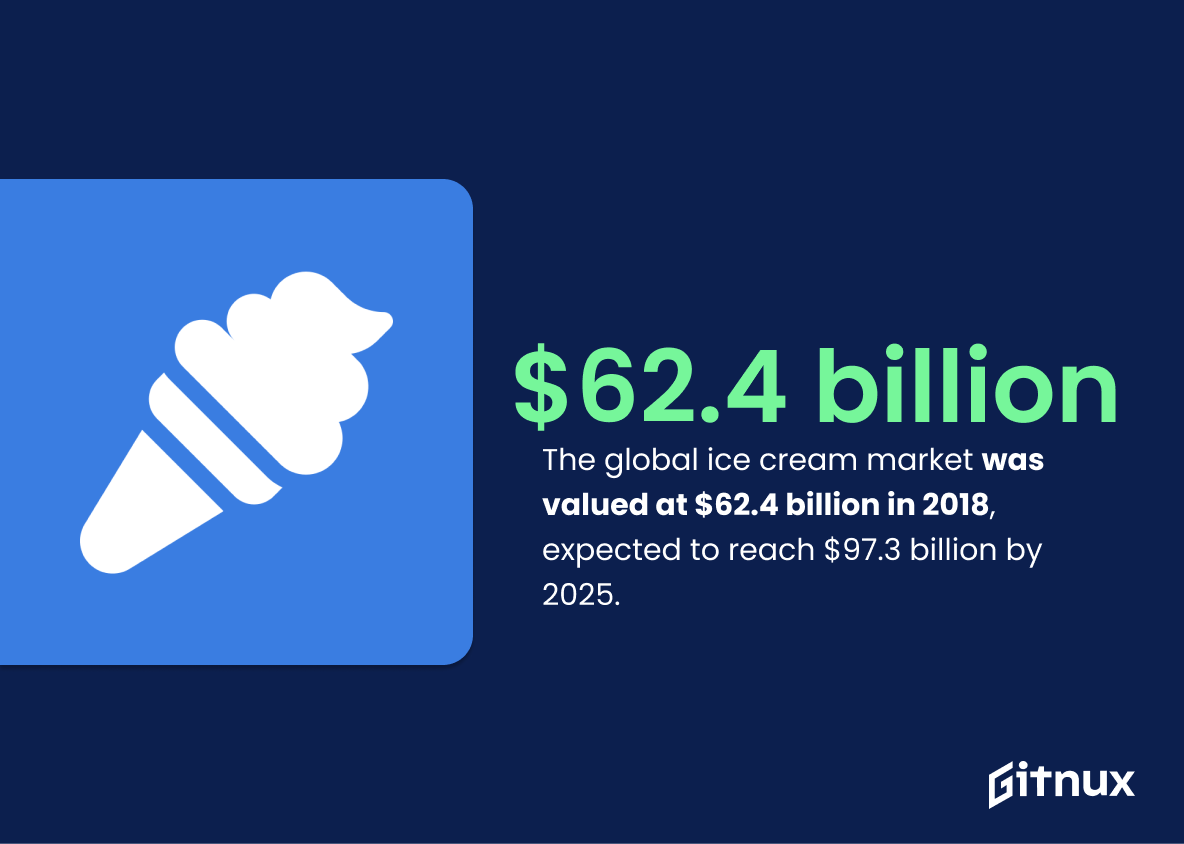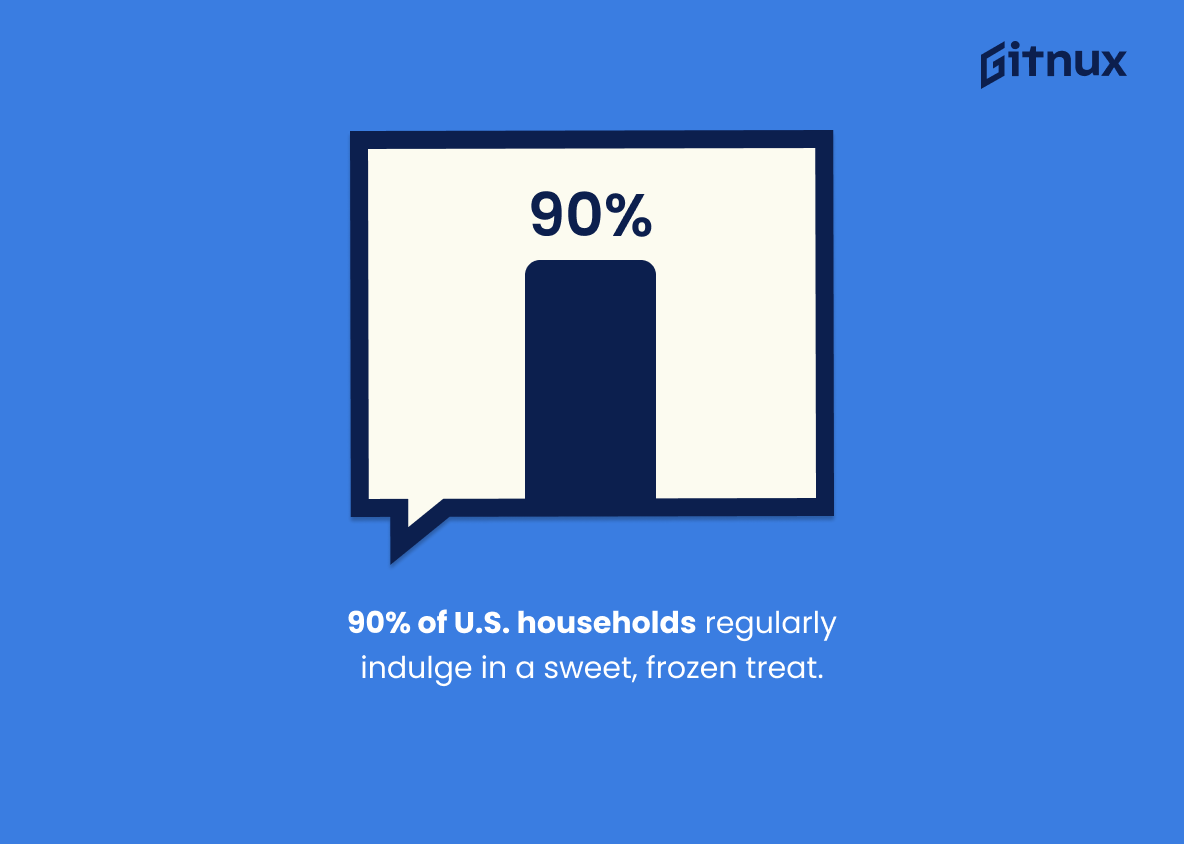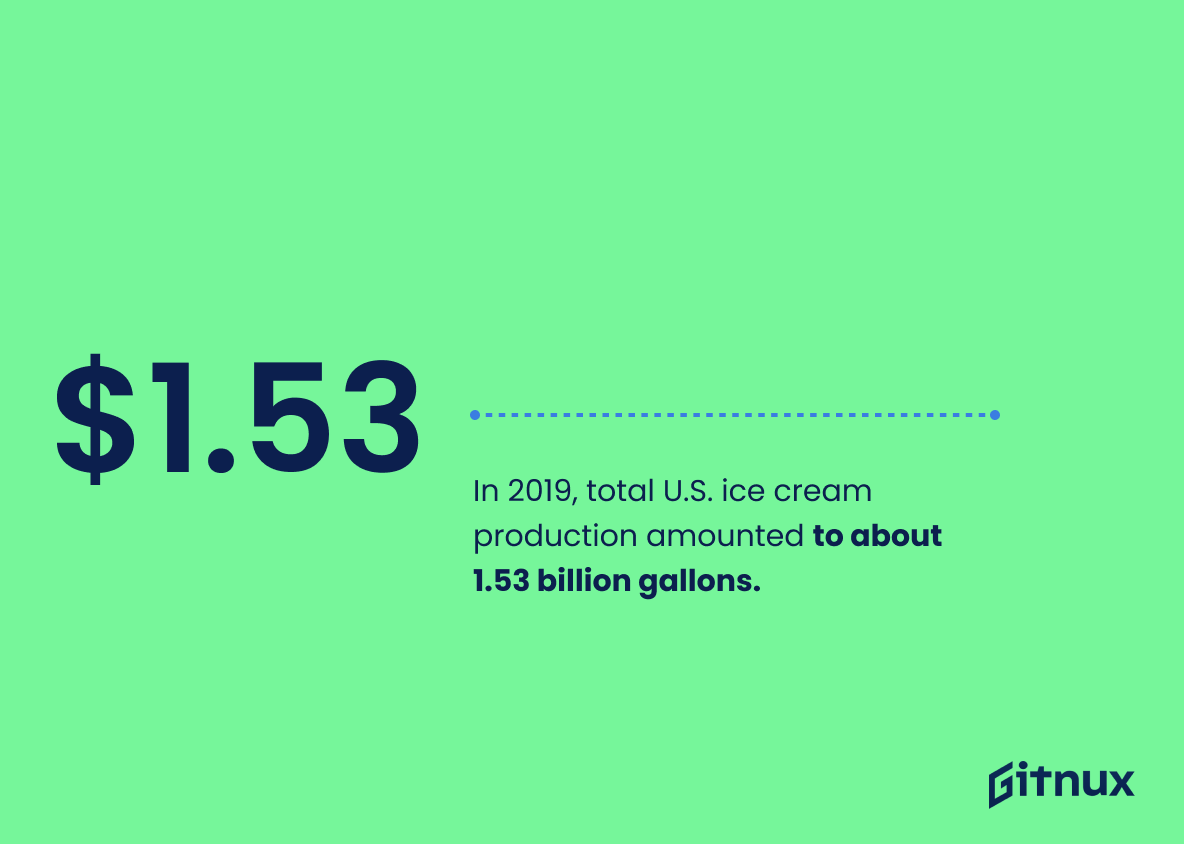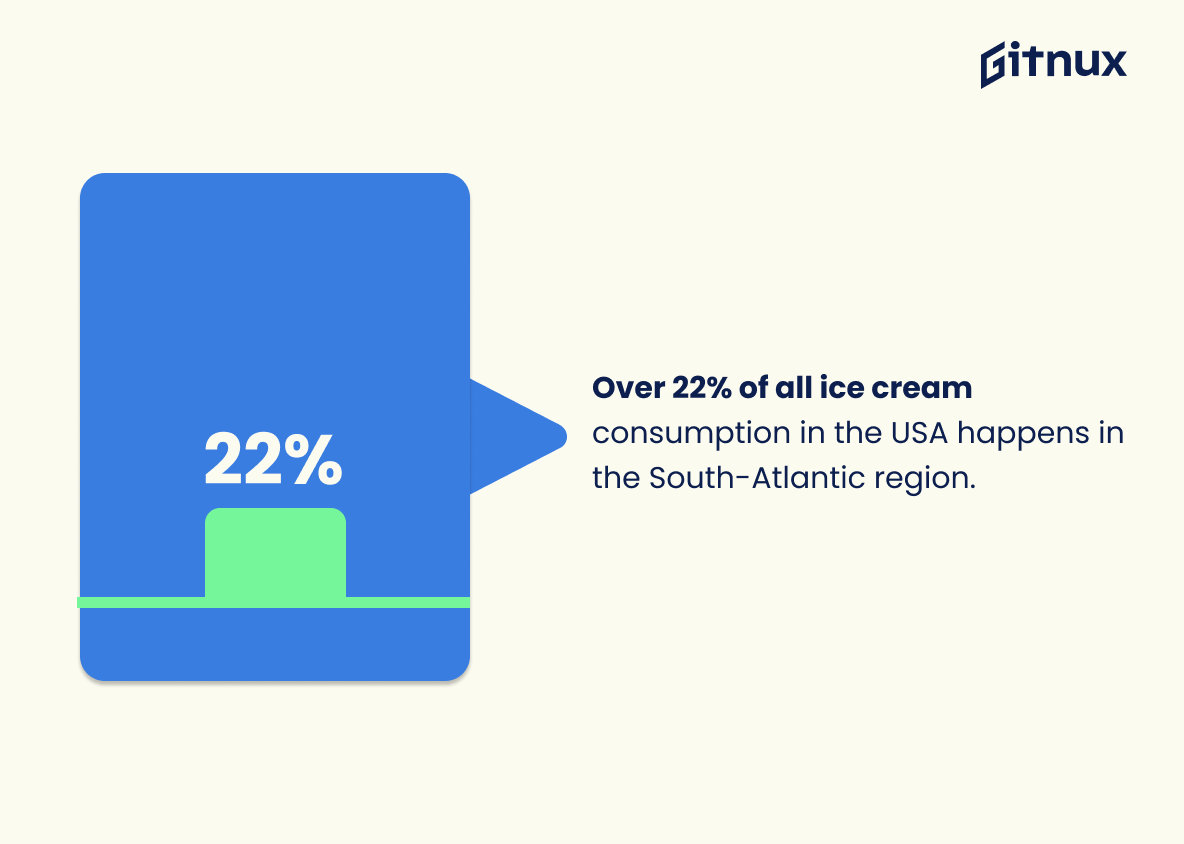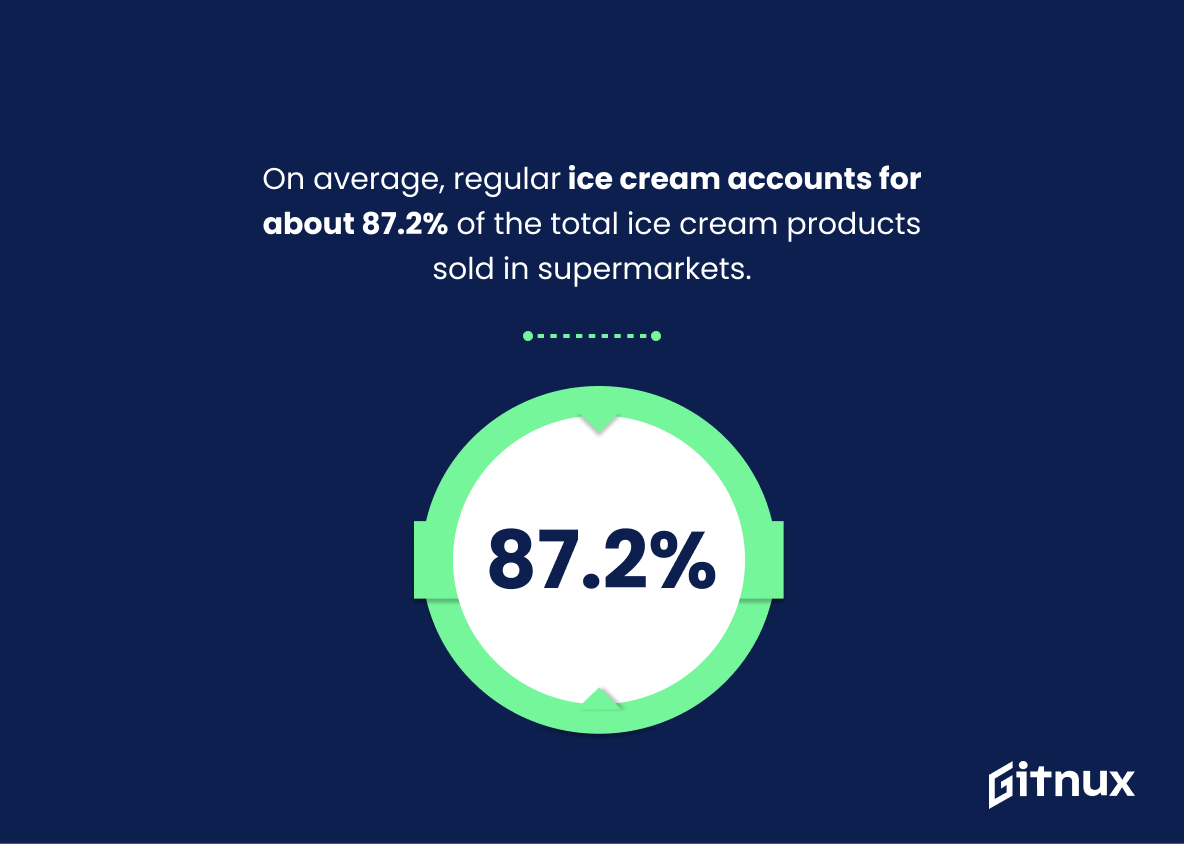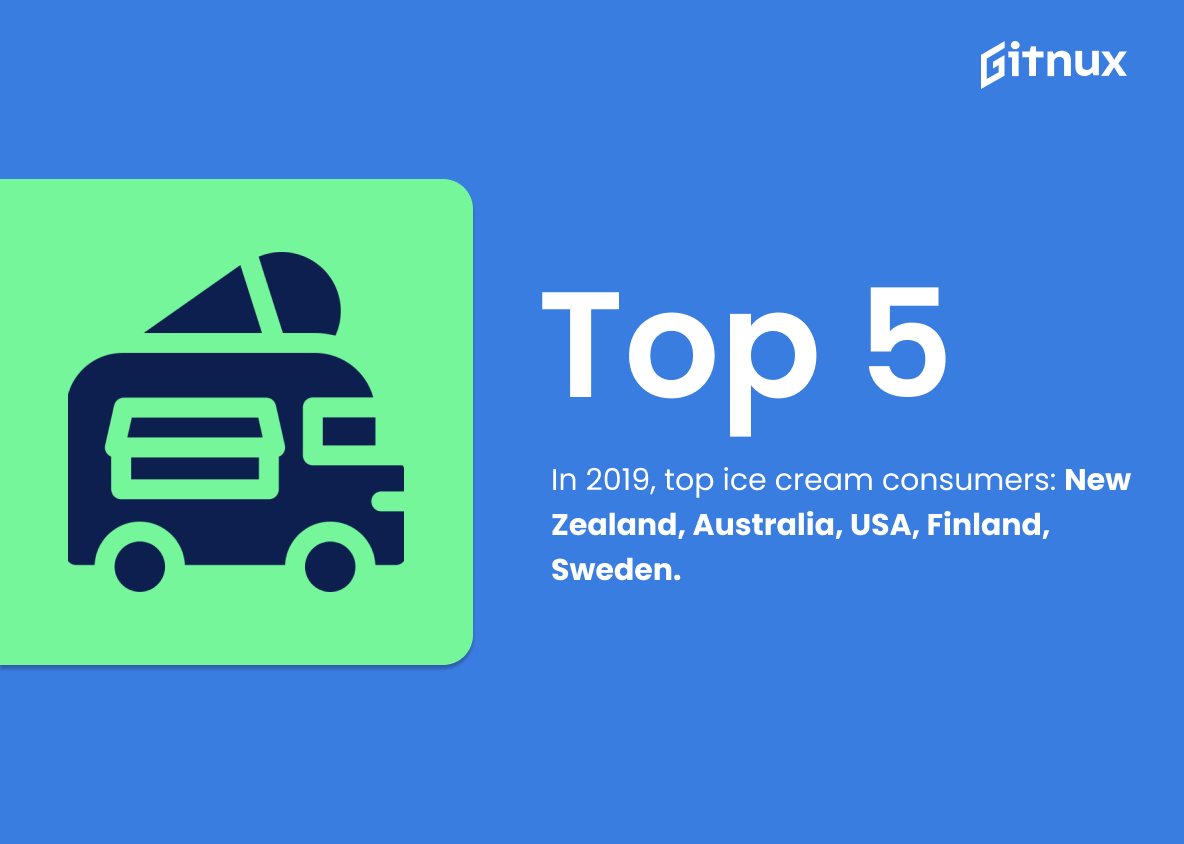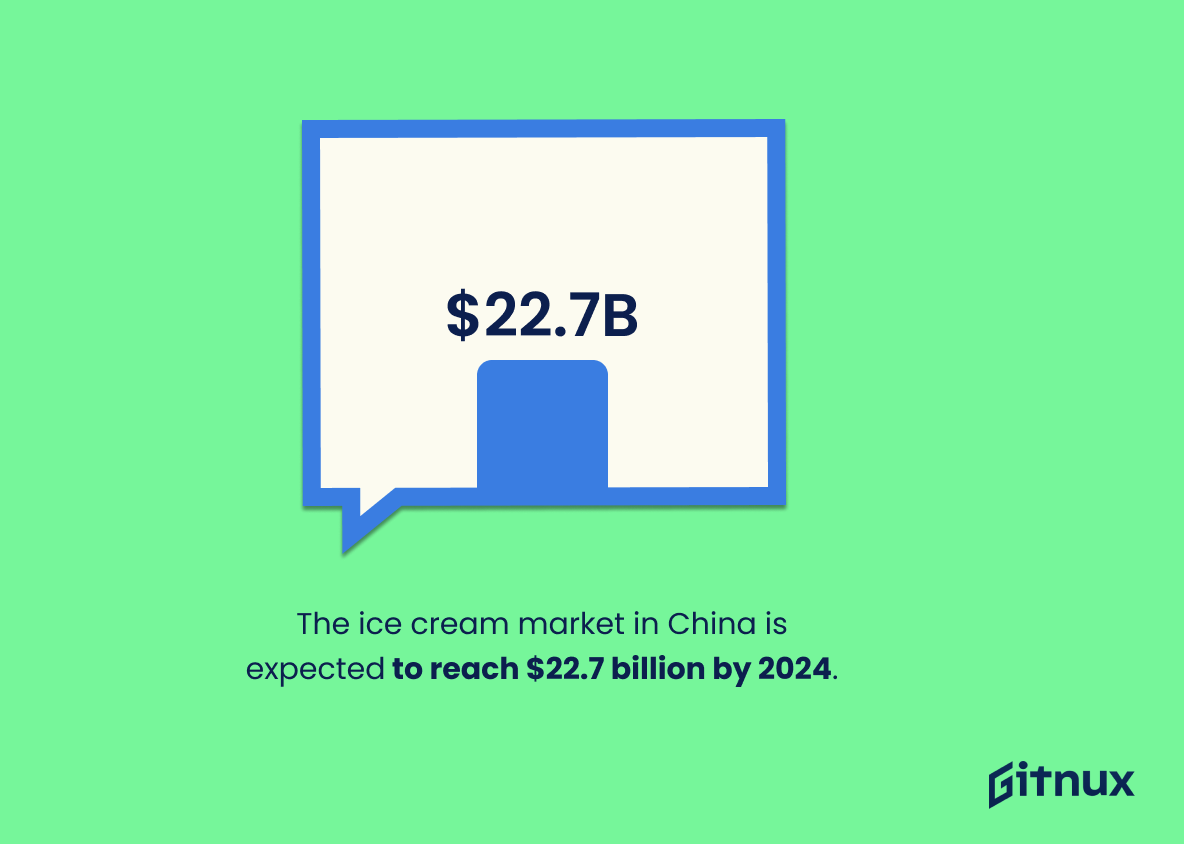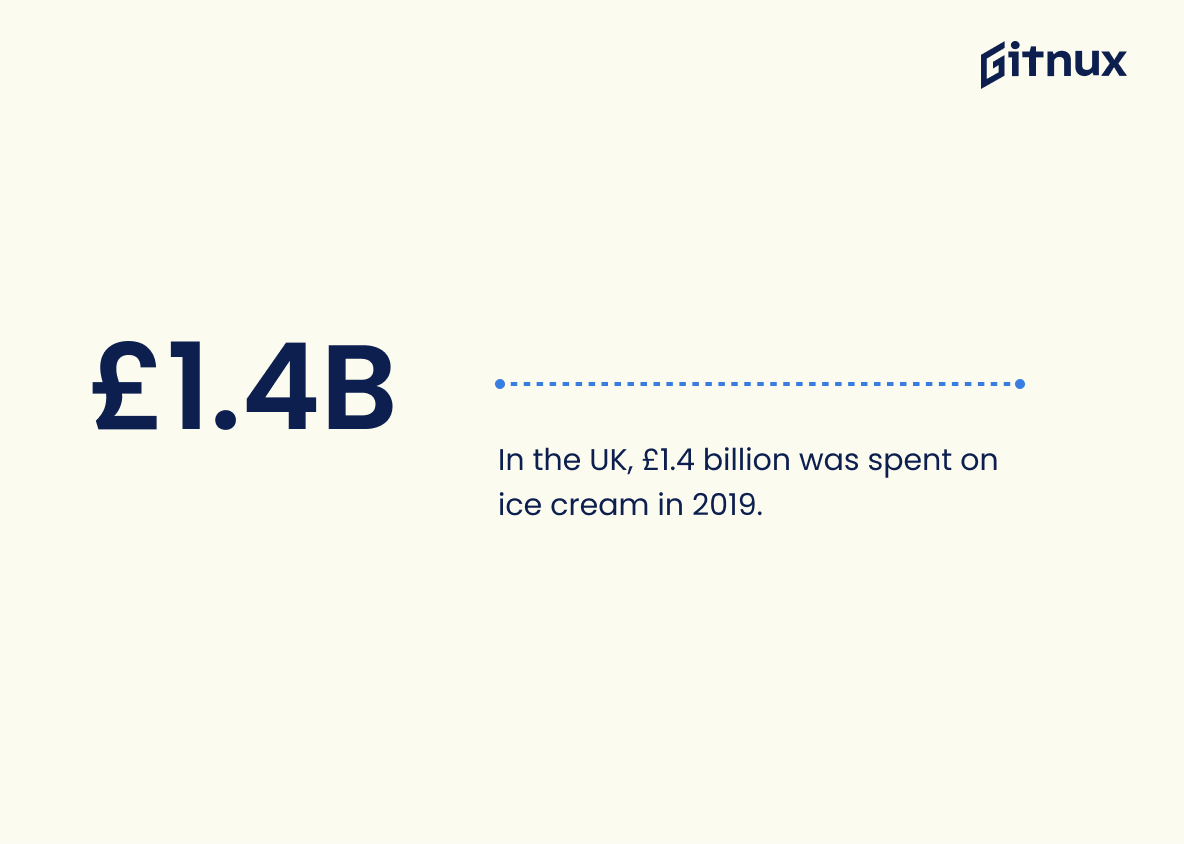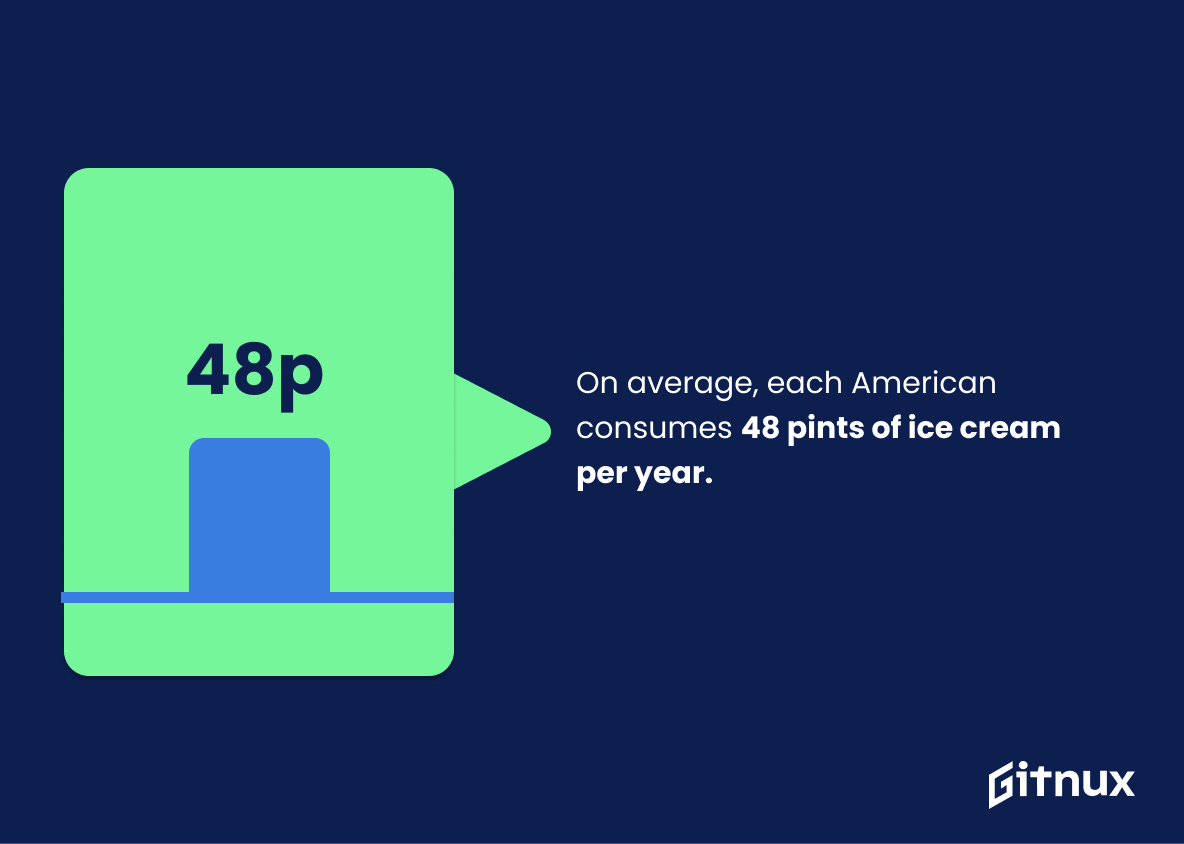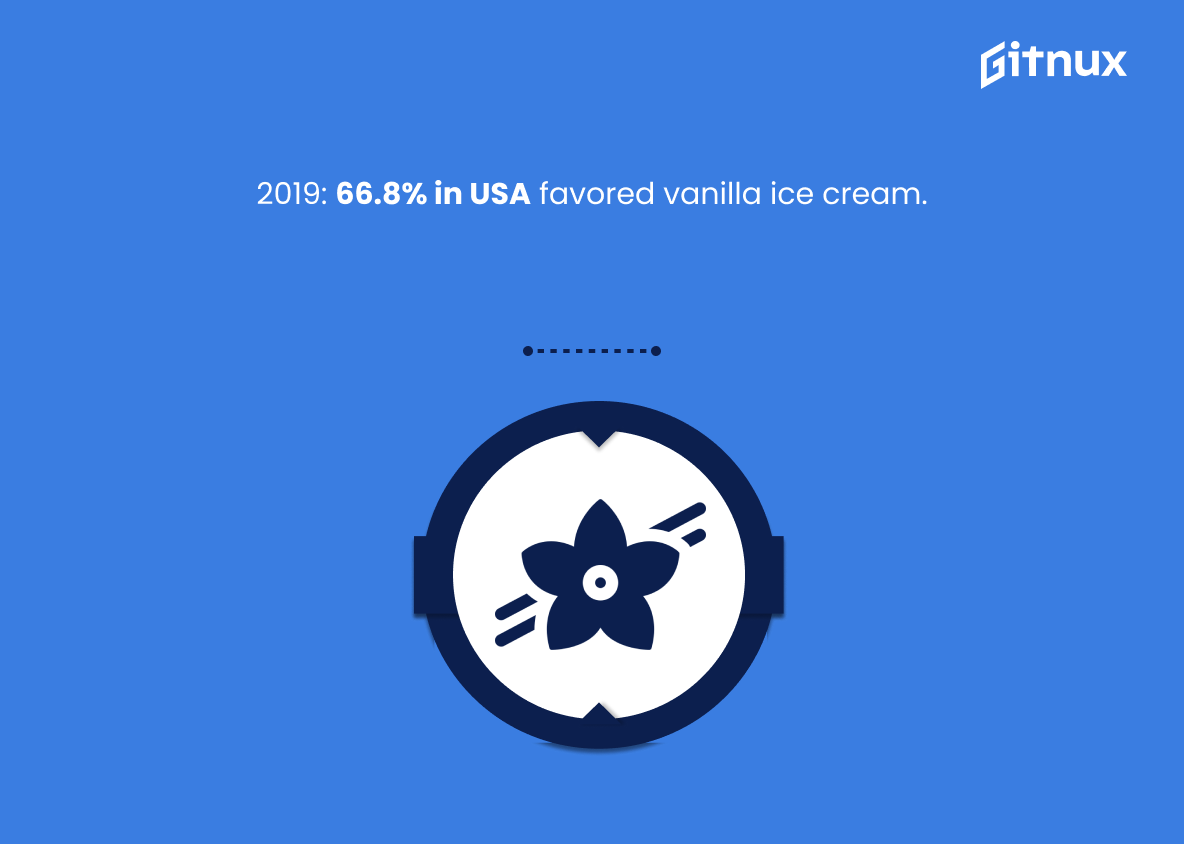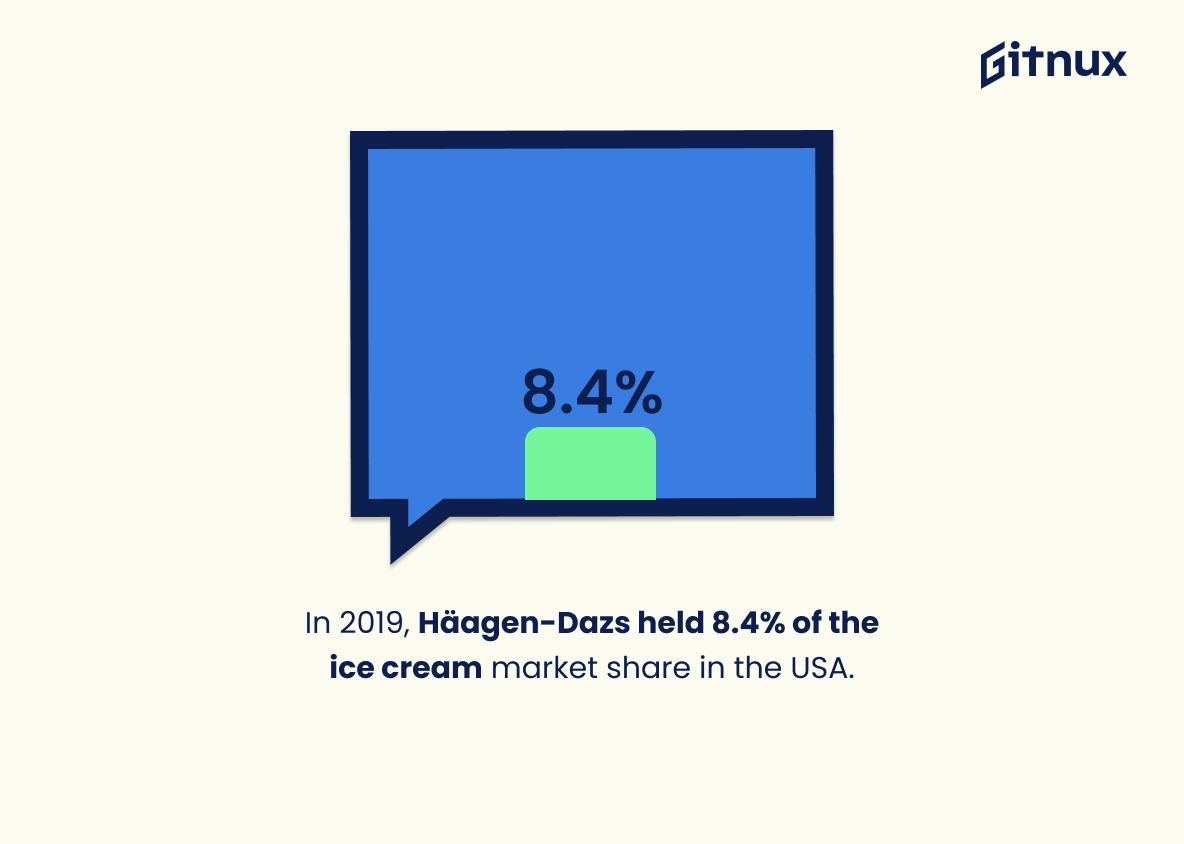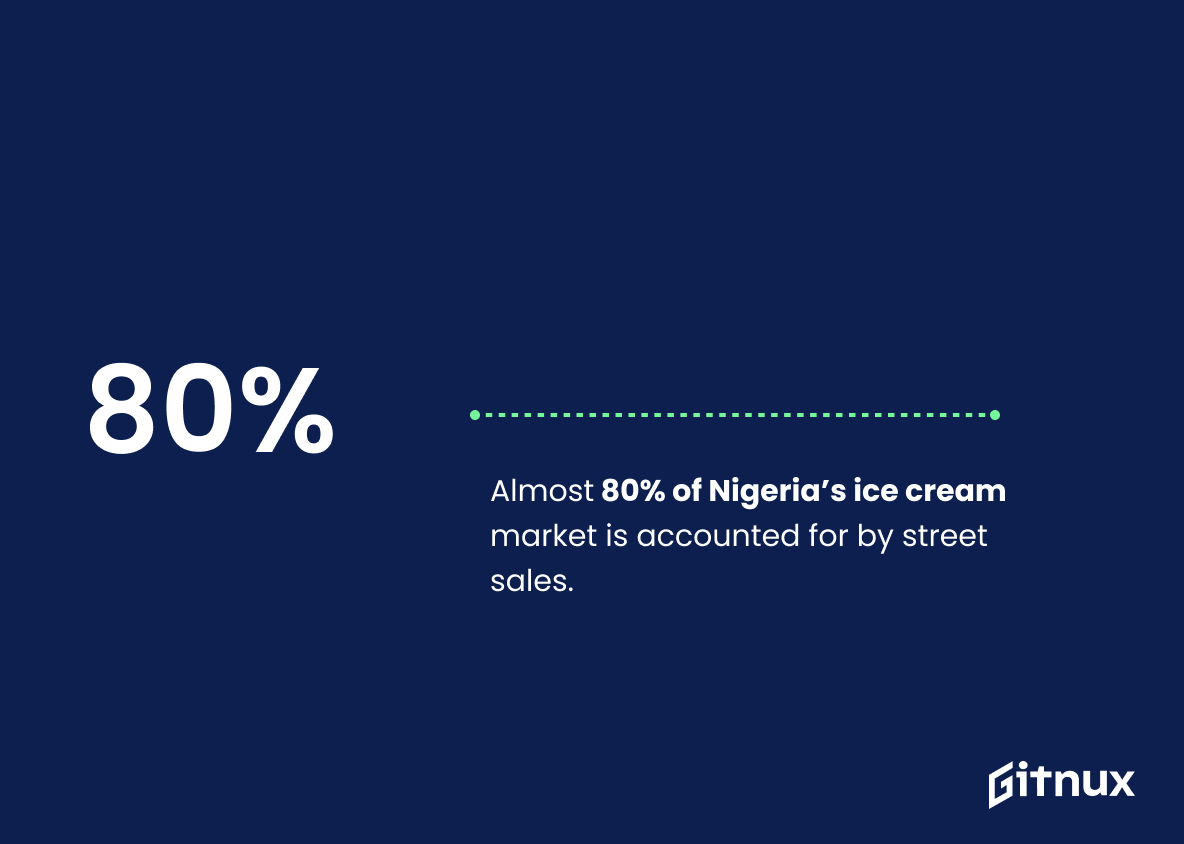As we dive into a world filled with delightful flavors and creamy textures, we explore a market that never seems to melt away – The Ice Cream Industry. Rich with history and brimming with innovation, this industry churns more than just butterfat and sugar. This blog post will take you on a mouth-watering journey through a labyrinth of data, trends, and figures that demonstrate the real scoop of the global ice cream industry. If you’ve ever wondered about the size of this frozen frontier, or pondered about the scope of your favorite guilty pleasure, get ready to satisfy your curiosity as we delve into the frosty heart of ice cream industry statistics.
The Latest Ice Cream Industry Statistics Unveiled
The global ice cream market was valued at $62.4 billion in 2018, expected to reach $97.3 billion by 2025.
The heartbeat of the ice cream industry throbs diligently with a major global pulse. The valuation of the ice cream market in 2018 stands as a robust testament at $62.4 billion. The sweetness of this figure isn’t just the present value, but the forward-looking growth it represents. A massive growth to $97.3 billion is projected by 2025, promising a flourishing industry that’s more than just a ‘treat’ for the economy. This projected growth indicates a rising demand for this comfort food globally. Thus, this potential for significant economic expansion offers great insight for entrepreneurs, industry professionals, and investment enthusiasts into the ripe opportunities that lay within the realm of ice cream production and marketing.
90% of U.S. households regularly indulge in a sweet, frozen treat.
Undeniably, the relevance of the figure that reveals a hearty 90% of U.S. households savoring the delight of a sweet, frozen treat cannot be overlooked in the broader panorama of the ice cream industry’s statistics. The omnipresence of a chilled dessert in the American family routines speaks volumes about the tenacious hold of this industry on the consumer market. It also brings into focus its substantial contribution to the nation’s economy. Furthermore, this sweet revelation uncovers hidden potential for entrepreneurs seeking opportunities in the delectable world of ice cream, while helping marketers harness consumer behavior to craft strategies for targeted outreach and product development. The charm of the indulgence of frozen treats just got a lot more intriguing, didn’t it?
In 2019, total U.S. ice cream production amounted to about 1.53 billion gallons.
Understanding the magnitude of U.S. ice cream production in 2019, which totaled approximately 1.53 billion gallons, unfurls the prolificacy of the ice cream industry. This colossal production does not only reflect America’s love for this sweet treat but also showcases the industry’s capacity for supplying a consumer base of hundreds of millions. It’s a testament to the immense demand that exists and industry’s ability to meet it. Thus, for anyone considering the economic ice cream landscape, this figure is a beacon of illumination, throwing light on the industry’s potential for entrepreneurs, market shifts, growth perspectives, and investment opportunities.
Over 22% of all ice cream consumption in the USA happens in the South-Atlantic region.
Taking a sweet dive into the trends of the Ice Cream Industry, it is fascinating to churn out that a hefty scoop of over 22% of all ice cream relished in the USA is devoured in the South-Atlantic region. The crux here is not just on the deliciously icy fact itself, but also on the implications it whips up. It adds a vital layer of understanding that highlights regional preferences, potential growth areas, and opportunities for ice cream manufacturers. It underlines the icy hot necessity for targeting marketing strategies in this region and flavors that swirl with the local taste buds. From an investment perspective, it firmly plants the South-Atlantic on the sundae map, aligning resources and development to satiate an already established and growing market. Above all, it sprinkles knowledge nuggets for ice cream lovers, narrating a part of the ever-churning saga of ice cream consumption in the USA.
On average, regular ice cream accounts for about 87.2% of the total ice cream products sold in supermarkets.
Understanding the landscape of the ice cream industry is like scooping into a rich, dynamic tub of market trends and consumer preferences. The statistic revealing that regular ice cream accounts for 87.2% of total ice cream products sold in supermarkets provides a flavorful insight into the heart of industry consumption. It underlines the dominance of traditional varieties in the market despite the increasing presence of alternative options such as frozen yogurt or dairy-free ice cream. This key fact signifies that enduring consumer appetite for classic ice cream remains remarkably strong, making it an iconic and essential sweet spot in the marketplace. Essentially, it’s like saying vanilla may have many flashy competitors, but it still takes the biggest scoop of sales- a fundamental flavor in planning for ice cream industry strategies.
In 2019, the top five ice cream consuming countries were New Zealand, Australia, the United States, Finland, and Sweden.
Highlighting the sweet-tooth supremacy of New Zealand, Australia, the United States, Finland, and Sweden in ice cream consumption provides valuable insights into our consideration of global ice cream industry trends. Unveiling this cool scoop of data not only flavors our understanding of international dessert preferences, but it also helps identify potential hotspots for market penetration and growth opportunities. The frosty enthusiasm found within these nations paints a decadent picture of potential investment space, giving readers an understanding of industry demands. So, let’s dig deeper into this sundae of statistics for the juiciest business strategies.
The ice cream market in China is expected to reach $22.7 billion by 2024.
Unraveling the creamy layers of the ice cream industry deserves no less than a dive into compelling numbers like this. The forecasted achievement of a striking $22.7 billion value for the Chinese ice cream market by 2024 provides a peak into not just the palate preferences of the world’s most populous country, but also indicates the potential energy of an industry waiting to explode. This projection gives readers a luscious scoop of the business opportunities the Ice Cream Industry is churning up in the East. By taking this into account, companies worldwide can strategically position their business plans and flavor innovations to serve this burgeoning market. It ignites ideas about needed adaptations in manufacturing, supply chain, marketing, and sales strategies. It’s a testament to the industry’s growth and awakens an understanding of significant shifts in consumer patterns. Indeed, it’s a number that can’t just melt into oblivion.
In the UK, £1.4 billion was spent on ice cream in 2019.
With a staggering expenditure of £1.4 billion on ice cream in the UK in 2019, the fervor for this frozen delicacy undeniably gets a spotlight. It’s not just a number, but a testament to the icy embrace that the British public has for this delightful treat. This financial figure portrays the mammoth size and immense potential of the ice cream industry, offering clear insights for both budding entrepreneurs and seasoned market leaders. It’s like a flavourful roadmap, guiding towards business strategies, marketing efforts, and predicting future trends. It’s not just about scoops and cones, it’s an economic landscape shaped by the British love for ice cream.
On average, each American consumes 48 pints of ice cream per year.
In the realm of Ice Cream Industry Statistics, the figure of 48 pints of ice cream consumption per American annually is a scoop-full testimony to the love affair Americans have with this creamy delight. This numerical dessert serves to underline the magnitude and potential of America’s ice cream market, becoming a sweet beacon for ice cream manufacturers, distributors, and marketers that guides strategic decision making, helps identify market trends, shapes product innovation and drives targeted marketing campaigns. To put it in the freezer, the thick layer of demand underlying this 48-pint figure is the creamy base that churns the wheels of the billion-dollar US ice cream industry.
In 2019, vanilla remained the most popular ice cream flavor among consumers in the USA, with 66.8% liking this flavor.
Diving deeper into the sweetness of our discussion, the dominance of vanilla as the utmost favored ice cream flavor serves as a rich, creamy insight into the tastes and preferences of US consumers, painting a much clearer picture for our ice cream industry overview. This scoop of data, showing vanilla’s triumphant position with a whopping 66.8% preference rate in 2019, saturates the market with vital inputs to influence product development, marketing strategies, and sales forecasts. Ultimately, the love story between Americans and vanilla ice cream adds a delectable layer to understanding the dynamics of the ice cream industry, helping stakeholders churn ideas and strategies efficiently.
In 2018, ice cream stores in the United States generated a revenue of 5.8 billion U.S. dollars.
Exemplifying the savory taste of success, the 2018 total revenue of 5.8 billion U.S. dollars emanating from ice cream stores across the United States serves as a decadent signifier of the burgeoning health and influence of the ice cream industry on the American economy. In the labyrinth of economic ups and downs, this impressive revenue figure stands as a melting testament to the lucrative nature of ice cream business, underpinning the significance of keeping a close eye on industry trends and consumer behaviors for market stakeholders. Extracted from a swirl of income statements and balance sheets, this sweet figure situates itself at the heart of our blog discussion, whisking its readers into the creamy reality of the ice cream industry’s financial heft.
In 2019, Häagen-Dazs held 8.4% of the ice cream market share in the USA.
Taking you on a delicious journey through the ice cream industry, let’s spotlight a delectable data point. Feast your eyes on this – In 2019, Häagen-Dazs enjoyed a sweet slice of the ice cream market in the USA, holding onto 8.4%. This scoop of information carries weight, as it serves up insight into just how consumer preferences can sway the tides in this flavorful industry. Ponder this – in an arena teeming with creamy contenders, Häagen-Dazs has managed to churn its way to securing a substantial market portion. Isn’t this a delightful testament to their brand’s appeal? As the industry continues to swirl with change, statistics like these help us crunch numbers, track trends, and taste the success of major players.
Almost 80% of Nigeria’s ice cream market is accounted for by street sales.
The vibrant statistic bringing to light that street sales make up almost 80% of Nigeria’s ice cream market serves as a stimulating ice-breaker to delve deeper into the realm of the Ice Cream Industry. Not only it spotlights the thriving street food culture but also exhibits an untraditional retail strategy which is distinctive to the Nigerian market. It’s like painting a vivid flavor map, showcasing how the icy delight is popularized and consumed in different parts of the world; thereby, adding a unique socio-cultural touch to the overall industry scenario. The trends and strategies deployed in such a major market segment can provide intricate insights that could be harnessed to stimulate innovation and market growth. This slice of data builds an exciting platform to explore unconventional marketing channels and the powerful impact they have on the industry statistics.
9% of all the milk produced by U.S. dairy farmers is used to produce ice cream.
Diving into the core of the ice cream industry, we unearth a fascinating scoop: a whole 9% of all milk produced by U.S. dairy farmers pours straight into our beloved ice cream production. This titbit feeds the realization of just how integral the ice cream industry is to our nation’s dairy sector. Moreover, it stirs thought on the significant role ice cream plays in our dairy consumption habits. Hence, this captivating statistic adds a flavorful layer to the understanding of the scale and impact of the ice cream industry.
Conclusion
From this analysis of ice cream industry statistics, it is clear that this dynamic sector experiences numerous fluctuations and trends influenced by the evolving consumer preferences, seasonal changes, marketing strategies and innovation in the product line. Despite the many changes in the industry, one major constant remains true – the global love for ice cream is immortal, and gains even more momentum with each passing day. As an investment, innovation or pure indulgence platform, in whichever capacity you relate to the ice cream industry, there’s no shortage of opportunities or demand. As we navigate through an increasingly versatile and competitive industry landscape, staying informed and innovative is central to achieving success in the beloved sphere of ice cream.
References
0. – https://www.www.thegrocer.co.uk
1. – https://www.www.idfa.org
2. – https://www.www.marketdataforecast.com
3. – https://www.www.statista.com
4. – https://www.www.nielsen.com
5. – https://www.www.alliedmarketresearch.com
6. – https://www.www.euromonitor.com
